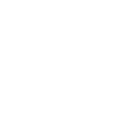Application msi upgrade
I am doing an upgrade to a package. Simple upgrade with the upgrade table. I need to back up a file from the older application and restore after new one is installed. I can do this with CA vbscript. However my question is when the deployment is done with SCCM or any other tools to a system account how do i handle it then? Do i somehow get it done with active setup and wait for a reboot?
Thanks for the help.
Answers (3)
Major or Minor Upgrade?
Comments:
-
I think major. However i am not sure what is the difference from the upgrade table? - ogeccut 11 years ago
-
If you do a Major , you need to know that there will be either a complete uninstall of previous ( or specified feature uninstall) or first an install and then a removal of what's left. The last option is suitable for you, but needs specific components rules in order to work efficient. Suitable because here you can add the CA for backup file action or move file action ( standard action) - jaybee96 11 years ago
-
you do not need to place the action outside the installation... just be sure you place the CA after installfiles. - jaybee96 11 years ago
-
I am using vendor msi and it does a full uninstall. So yes, it is major. I am thinking of CA that will copy a file to a temp location "need to run before uninstall" and copy to a new location after new version is installed "run at the very end"
I am sorry but i do not see logic in your answer. - ogeccut 11 years ago
If you do it through ActiveSetup, it will try to copy the files when each user's first login after installation..
Just write two custom actions using VBScript
1. BackUpFiles - Backup the files in Temp folder and the custom action should be placed in between InstallValidate and InstallInitialize standard actions
at the same time it should not be after "RemoveExistingProducts" standard action in ExecuteImmidiate
2. RestoreFiles - Restore the files to your app's folder and the custom action should be placed after "RemoveExistingProducts" and "InstallFinalize" standard actions in ExecuteImmidiate
In the same custom action, delete the files from Temp folder..
This should work..
Comments:
-
jagadeish thanks for taking your time. I understand all that, however my question was. If the install is done under a system account "SMS for example" How do i find that file in a user context? What if there is more then one user "which i dint think is the case" - ogeccut 11 years ago
Do we assume, from your last question, that the file in question resides somewhere in the logged-in user's profile?
Comments:
-
Correct. Sorry if that wasn't clear. - ogeccut 11 years ago



